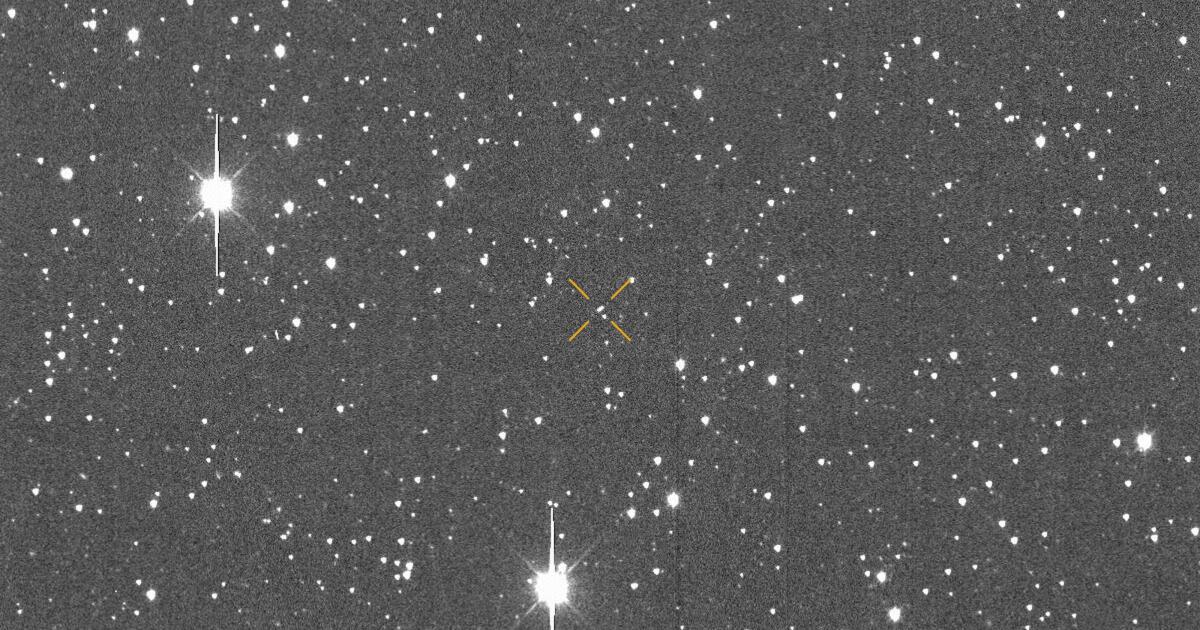
The likelihood of asteroid 2024 YR4 colliding with Earth in seven years has seen fluctuations recently, yet experts remain cautiously optimistic.
Discovered at the end of 2024 by a NASA-supported telescope in Rio Hurtado, Chile, scientists assessed a month later that there was over a 1% chance the asteroid could strike our planet in December 2032.
When the preliminary findings were shared in January, researchers anticipated that the asteroid’s trajectory and potential impact risk would evolve with ongoing observations, and that has indeed been the case.
On Tuesday, astronomers noted that the possibility of 2024 YR4 colliding with Earth rose to approximately 3%, a figure that is quite unusual for an asteroid measuring between 130 and 300 feet in diameter. However, by Wednesday, that estimate fell to 1.5%.
“Nonetheless, the chances remain minimal, so there is no immediate cause for alarm,” remarked Davide Farnocchia, a navigation engineer at NASA’s Jet Propulsion Laboratory and the Center for Near Earth Object Studies.
Is it typical for the impact risk to change rapidly?
Indeed, the fluctuation in impact risk can happen for scientific reasons, and it’s also possible for those probabilities to decrease just as quickly.
Initially, a small chance of impact might be reported simply because “we cannot completely eliminate the possibility of a collision with Earth, [but] eventually, the likelihood will reach zero,” explained Farnocchia.
When an asteroid is detected, the exact future position cannot be accurately predicted; instead, scientists compile data to estimate a potential range of positions. If that range intersects with Earth, the possibility of a collision arises, as noted by NASA Spaceflight.
As astronomers gather additional observational data, their forecasts regarding the asteroid’s path and future location become increasingly refined.
The current trajectory range for 2024 YR4, derived from hundreds of observations, is still under examination, resulting in a broad range that currently overlaps with Earth’s orbit. This overlap explains the increased statistic regarding potential impact.
As further data is collected, this range might narrow significantly, potentially eliminating the overlap with Earth, thus reducing the likelihood of 2024 YR4 colliding with our planet to zero.
The present trajectory of 2024 YR4 is nearly a straight path away from Earth. Astronomers will continue their observations until the asteroid moves out of sight, with a deadline of early April to track its possible collision course and future position.
Keep informed about astronomers’ findings by visiting the Sentry webpage.
What areas could the asteroid impact?
Should the asteroid’s trajectory intersect with Earth, its potential impact zone would lie within a “risk corridor.” This corridor stretches across the eastern Pacific Ocean, northern South America, the Atlantic Ocean, the Arabian Sea, and parts of South Asia, according to the International Asteroid Warning Network.
Have we faced a similar asteroid event previously?
Yes, astronomers reference asteroid 99942 Apophis, which spans 1,099 feet and was first identified in 2004.
At its initial observation, NASA officials classified Apophis as one of the most dangerous asteroids, with concerns about a possible impact with Earth in 2029.
During its early risk assessments, Apophis received a Torino Scale rating of 4, indicating a significant threat level for potential Earth impact events.
The Torino Scale, which can range from 0 to 10, categorizes risks from no hazard (0) to requiring attention from astronomers (2-4), severe threats (5-7), and definite collisions (8-10).
After further analysis and data collection, scientists have since reassured the public that the impact risk for Apophis has been substantially diminished, with a potential impact in 2068 considered unlikely.
In contrast, 2024 YR4 is currently rated as a Torino 3.
An asteroid categorized as Torino Scale 3 is relatively rare, occurring mainly in those larger than 65 feet with an impact risk of 1% or more.
If 2024 YR4 were to collide with Earth, it could disintegrate in the atmosphere, transforming into a smaller meteorite before touching down.
Larger asteroids may survive atmospheric entry but typically impact in locations that result in minimal to no immediate damage, as noted by the United States Geological Survey. Many meteorites ultimately land in oceans or sparsely populated regions.









